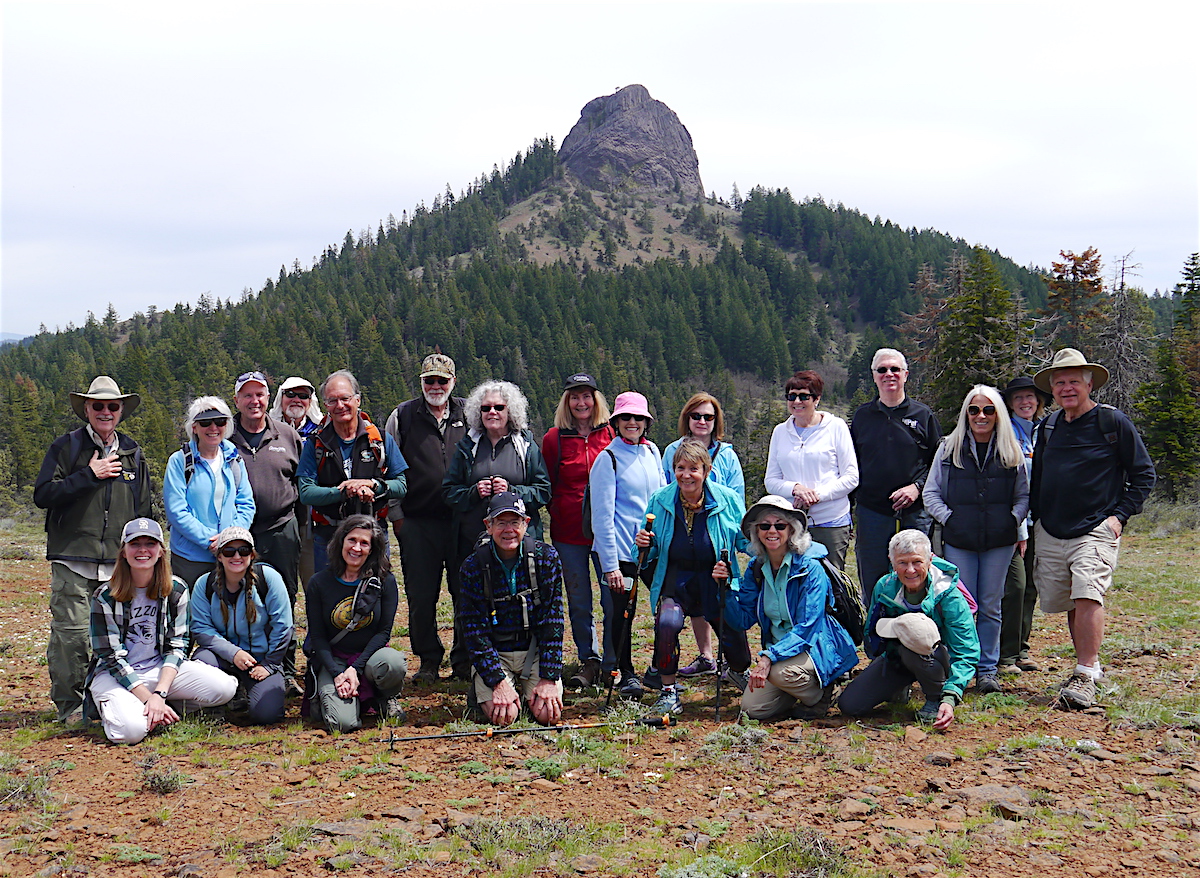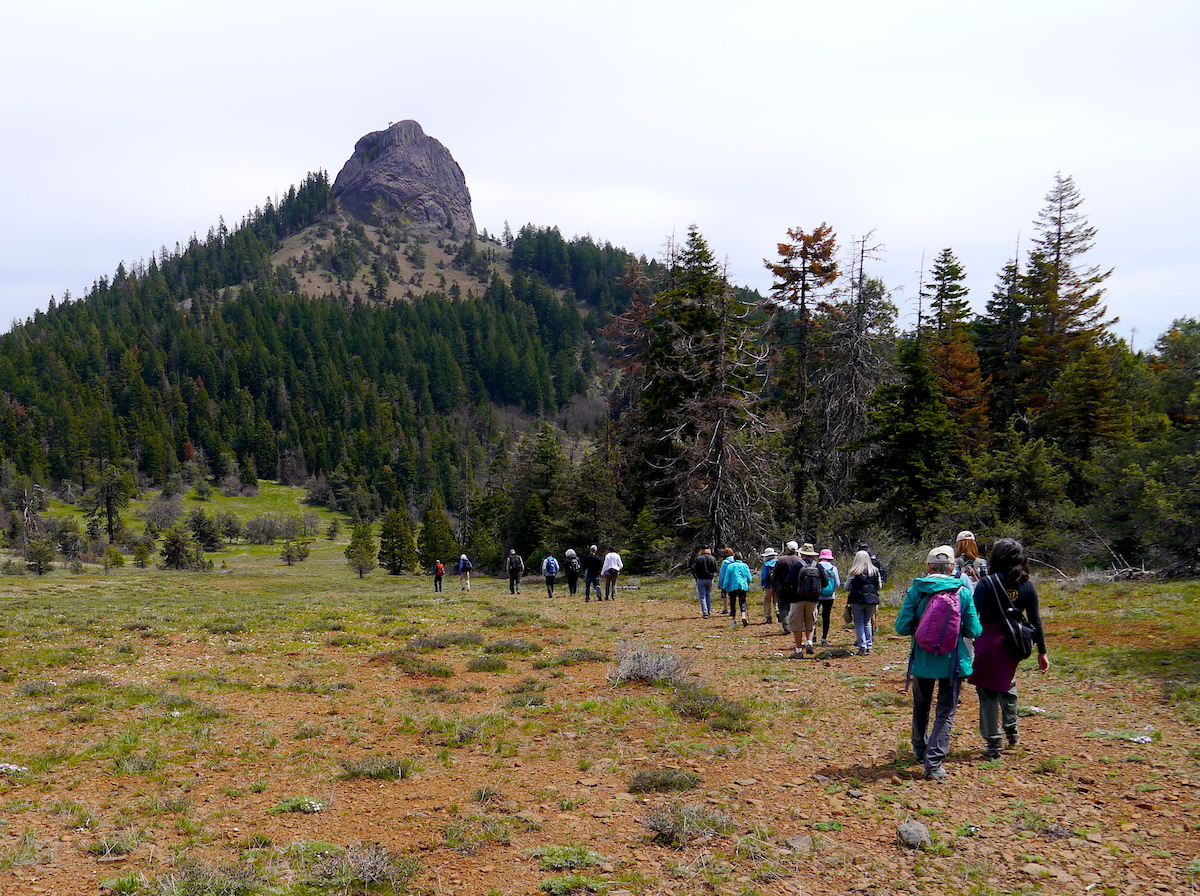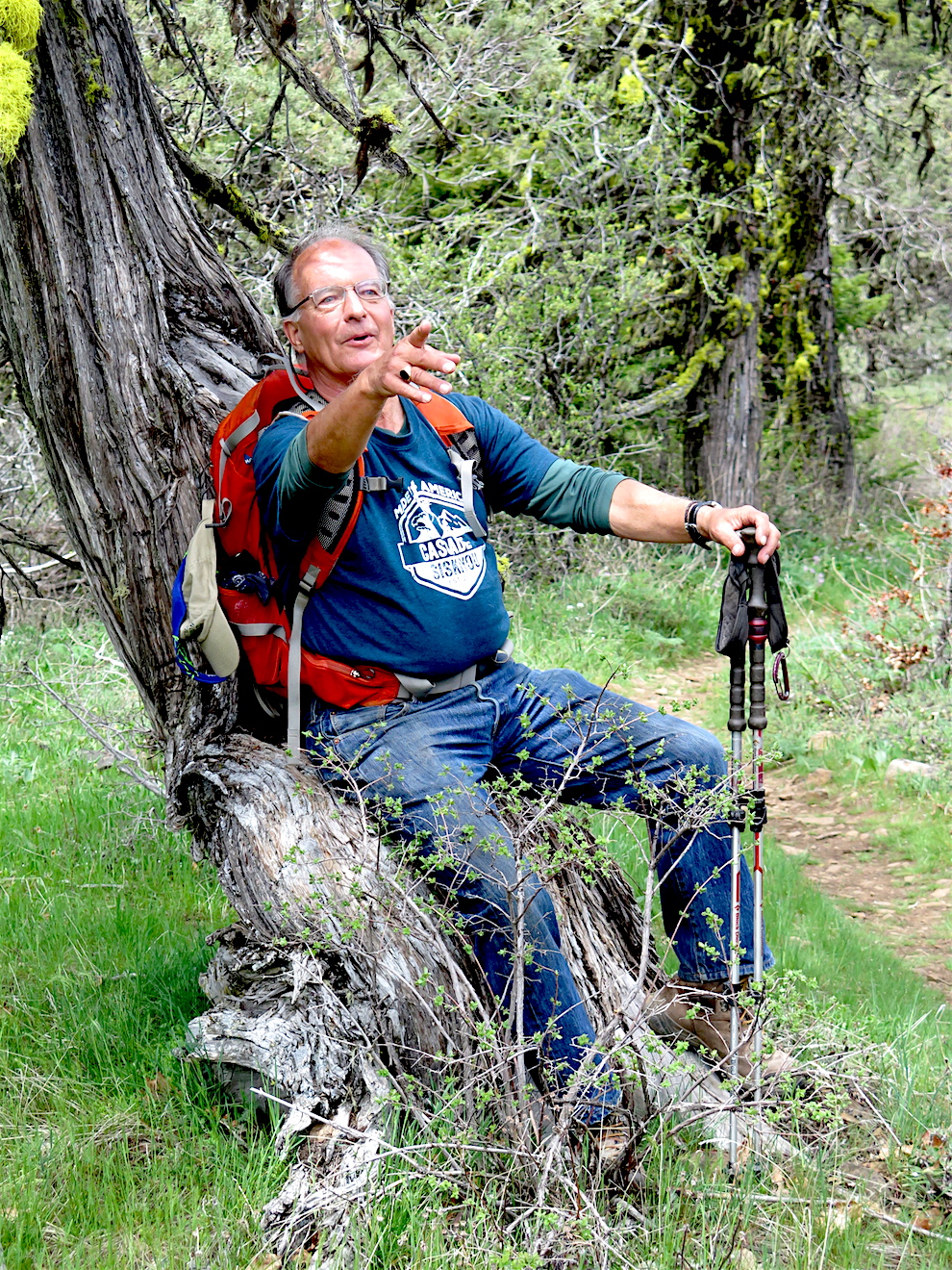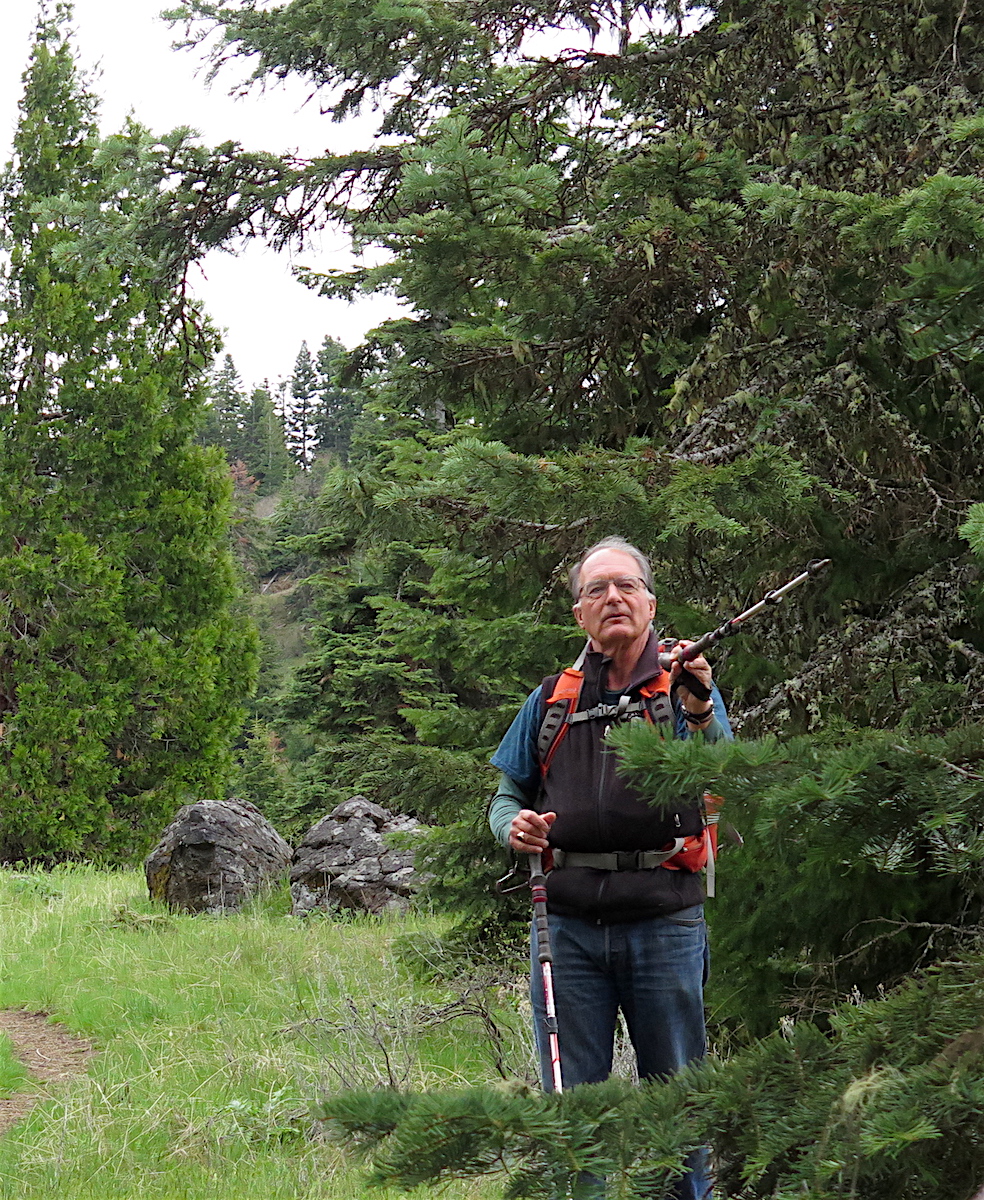with Dr. Jeff LaLande. May 4-5, 2018
As we gathered at the trailhead, the air was cool and the sky was overcast - a perfect day for a hike in the Cascade-Siskiyou National Monument. Our group of roughly 25 eager learners embarked along the Pacific Crest Trail where it intersects with Pilot Rock Road. Our guide, historian and archaeologist Dr. Jeff LaLande, led the way.
The night before, Jeff told us about the Native Americans that lived in this area long before white settlers arrived. We learned about what these tribes, primarily the Shasta and Takelma, did here. For instance, they are excellent basket makers, and can weave baskets that are not only beautiful but watertight. While the Shasta and Takelma did not practice large-scale agriculture, they did manage the landscape through small-scale planting and with the aid of controlled burns.
During our Saturday morning hike, Jeff pointed out numerous natural resources that were utilized by the Shasta and Takelma. We all paused to enjoy the beautiful Henderson’s fawn lilies (Erythronium hendersonii), Washington lilies (Lilium washingtonianum), lomatium (Lomatium spp.), and fritillaries (Fritillaria spp.), all of which have edible bulbs that contributed to the diets of the Shasta and Takelma. We also saw Oregon grape (Berberis aquifolium), whose uses were twofold - the sour berries were a source of food, while the root was used to produce a yellow dye. The elderberry shrubs (Sambucus spp.) that lined the trail were not only a source of berries, but may have also been used to create hollow flute-like instruments. As we kept traveling, it became clear that this landscape was full of stories and surprises.
We frequently paused to consider the changes that have reshaped the Monument since the removal of its native inhabitants. The most marked of these changes are those brought about by decades of intense fire suppression. Jeff pointed out numerous tell-tale signs of a landscape that has been deprived of fire, including white and red firs invading lower elevations, Oregon white oaks growing in extremely dense stands, and mistletoe populations that thrive in overly dense forest. Before white settlers arrived, the Shasta and Takelma used fire for such uses as controlling the movements of deer and keeping unwanted plants from taking hold. Perhaps someday soon this landscape will be restored to its former glory under a natural fire regime.
After traveling south on the Pacific Crest Trail, we joined up with another unmarked trail. We traversed this trail for a while when all of a sudden we turned a corner and arrived at a remarkable view of Mount Shasta. This would be our lunch spot. As we refueled, Jeff continued to impress us with his deep knowledge of the area by putting a name to every hill, butte, and mountain peak on the horizon. Though we could have listened to him talk about the geological formation of the Cascades and Siskiyous for hours, it was time to press on.
It wasn’t long until we found ourselves up close and personal with Pilot Rock, or as the Takelma call it, Tan-ts’at-sineptha (which literally means “rock standing up”). Though this name doesn’t convey much spiritual reverence, it is believed that Tan-ts’at-sineptha was a site of great power for the Shasta and Takelma. Even today, it is hard not to feel inspired and invigorated in the shadow of that “rock standing up.” Later, when we loaded up in our cars to head back to civilization, we would remember this powerful image and cherish the chance to visit a place full of diversity, mystery, and many stories.
By Heather Wilson
Hike and Learn Coordinator
Photos by Heather Wilson, except where noted.
